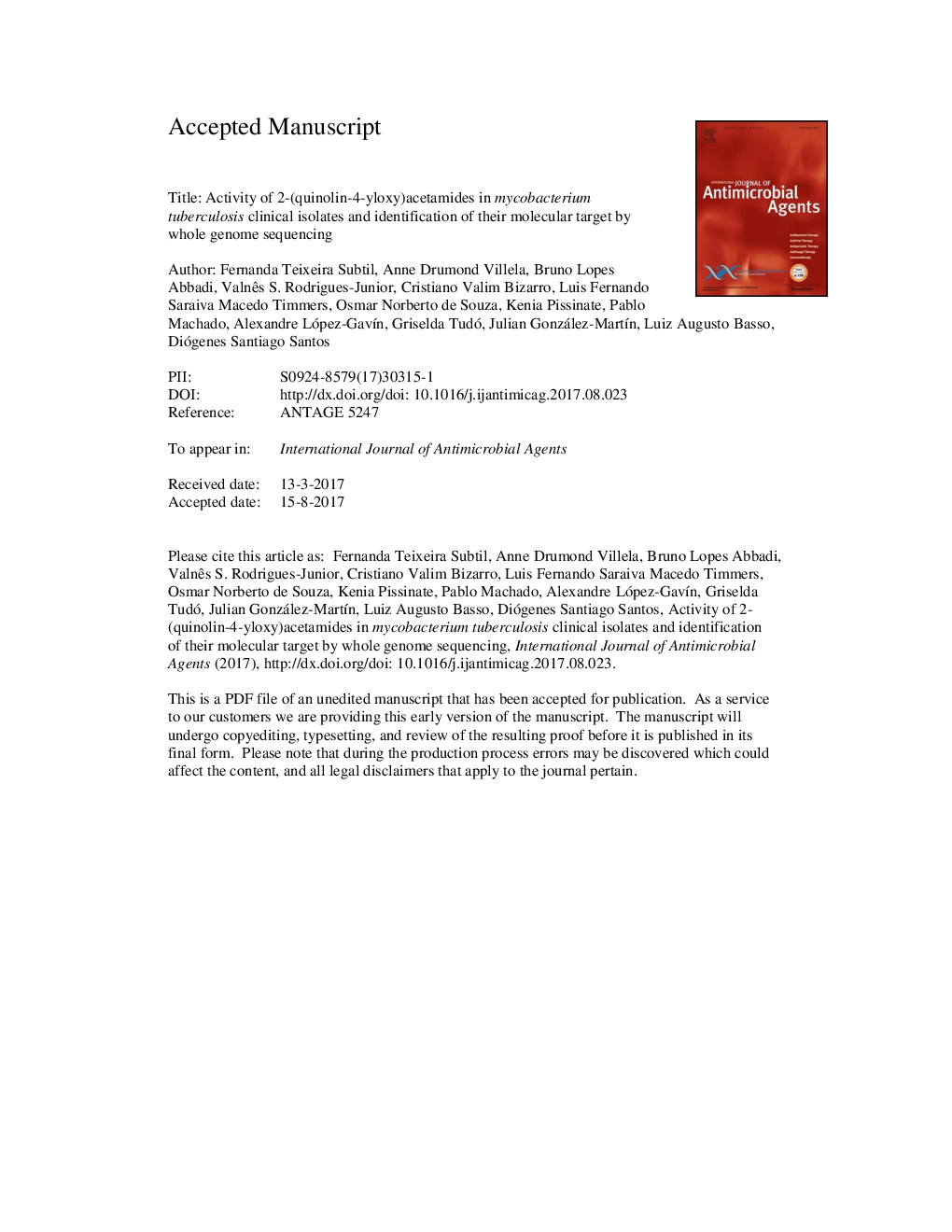| Article ID | Journal | Published Year | Pages | File Type |
|---|---|---|---|---|
| 8738616 | International Journal of Antimicrobial Agents | 2018 | 23 Pages |
Abstract
The 2-(quinolin-4-yloxy)acetamides (QOAs) have been reported to be promising molecules for tuberculosis treatment. Recent studies demonstrated their potent antimycobacterial activity, biological stability and synergism with rifampicin. The identification of the molecular target is an essential step towards the development of a novel drug candidate. Here, we report the target identification of the QOAs. We found that these compounds are active against Mycobacterium tuberculosis clinical isolates resistant to isoniazid, rifampicin, ethambutol, streptomycin and ethionamide. The initial evidence that DNA gyrase might be the target of QOAs, based on high minimum inhibitory concentration (MIC) values against ofloxacin-resistant clinical isolates and structural similarities with fluoroquinolones, was discarded by experiments performed with M. tuberculosis GyrA point mutant, DNA gyrase supercoiling inhibition assay and overexpression of DNA gyrase. We selected spontaneous mutants for our lead compound 21 and observed that these strains were also resistant to all QOA derivatives. The genomes of the spontaneous mutants were sequenced, and the results revealed a single mutation in qcrB gene (T313A), which indicates that the QOAs target the cytochrome bc1 complex. The protein-compound interaction was further investigated by molecular docking. These findings reinforce the relevance of these compounds as promising candidates for the treatment of multidrug-resistant tuberculosis.
Related Topics
Life Sciences
Immunology and Microbiology
Applied Microbiology and Biotechnology
Authors
Fernanda Teixeira Subtil, Anne Drumond Villela, Bruno Lopes Abbadi, Valnês S. Rodrigues-Junior, Cristiano Valim Bizarro, Luis Fernando Saraiva Macedo Timmers, Osmar Norberto de Souza, Kenia Pissinate, Pablo Machado, Alexandre López-GavÃn,
